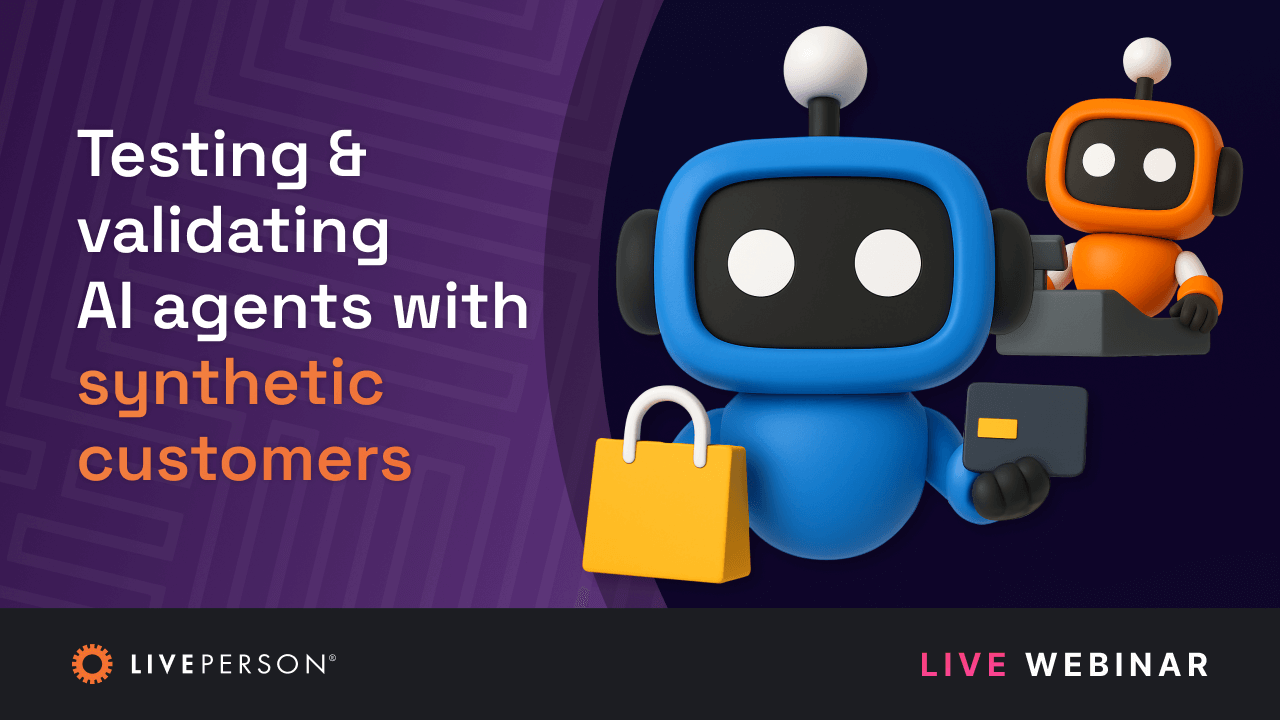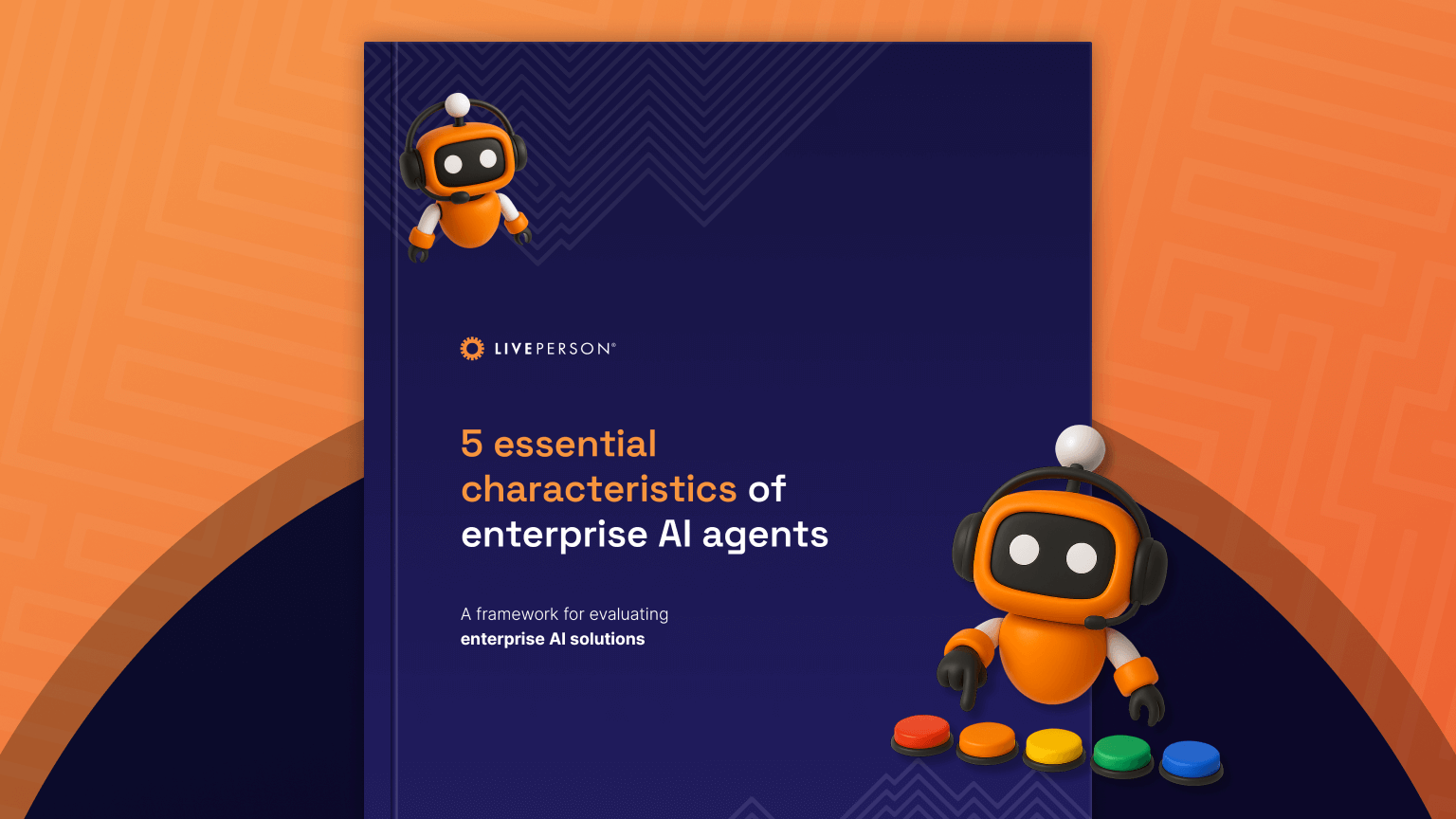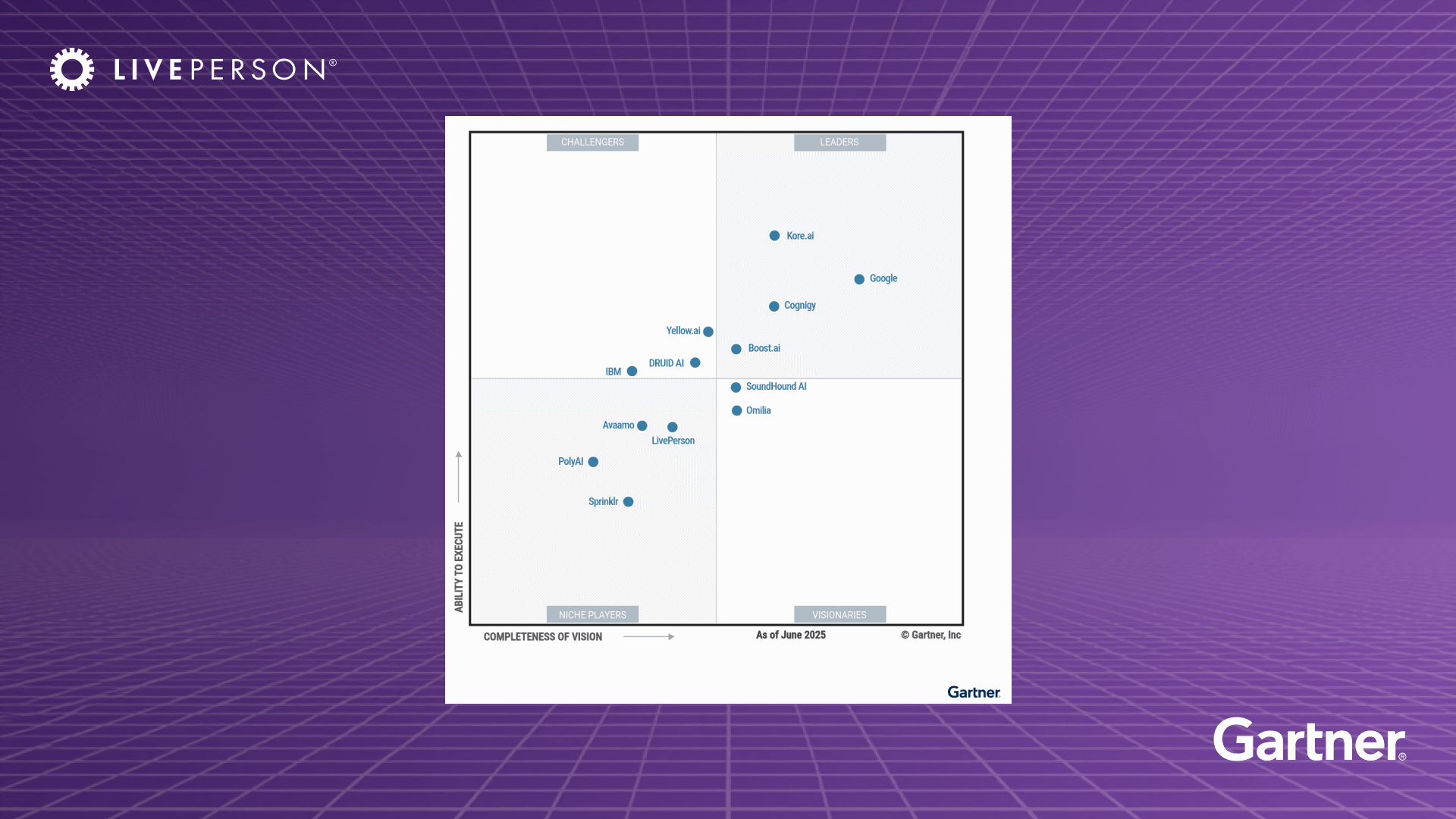article
Net Promoter Score (NPS) survey template: What it is and why it matters
When integrated with conversational AI solutions, NPS becomes an even more valuable tool.
April 01, 2025 • 5 minutes

Net Promoter Score (NPS) is a widely used customer loyalty metric that measures how likely customers are to recommend your brand to others. For companies implementing AI-powered messaging solutions, it serves as a powerful indicator of success, and weaving an NPS survey template into your interactions can help you track it. Take Zurich UK, which achieved an impressive +69 NPS after implementing LivePerson’s messaging capabilities for insurance claims, or the B2B SaaS company that transformed their AI chatbot NPS from -25 to +50 by enhancing their AI capabilities.
NPS provides businesses with a clear understanding of customer satisfaction and identifies areas for improvement. Rather than being a one-time campaign, NPS should be part of a larger customer-centric strategy, helping businesses analyze key touch points and capture customer feedback at critical moments — like after a purchase, customer support interaction, or renewal. When integrated with conversational AI solutions, NPS becomes an even more valuable tool for orchestrating personalized experiences that drive measurable business outcomes.
Beyond customer satisfaction: Benefits of NPS surveys
While NPS focuses on loyalty, a CSAT score (Customer Satisfaction Score) measures immediate satisfaction after an interaction. Both metrics work together: CSAT assesses short-term happiness, while NPS evaluates long-term customer loyalty.
- Measures customer loyalty: An NPS survey template goes beyond customer satisfaction and focuses on long-term commitment.
- Predicts business growth: Companies with high NPS tend to experience more organic referrals and customer retention.
- Enhanced customer centricity: Customer centricity is about prioritizing customer needs and experiences in every business decision. Net Promoter Score surveys allows businesses to address concerns raised by detractors before they churn.
How NPS works
NPS is based on a single question (with multiple variations):
“On a scale of 0-10, how likely are you to recommend our company/product/service to a friend or colleague?”
Respondents are categorized into three groups:
- Promoters (9-10): Loyal customers who actively recommend your brand.
- Passives (7-8): Satisfied but not enthusiastic customers who are unlikely to promote your brand.
- Detractors (0-6): Unhappy customers who may damage your brand’s reputation through negative word-of-mouth.
Understanding detractors is crucial, as they offer insights into pain points that could negatively impact your brand.
How to calculate your NPS score
The formula for calculating NPS is: NPS = (% of Promoters) – (% of Detractors) The score ranges from -100 to 100, with higher scores indicating stronger customer loyalty with more potential repeat customers.
Best practices for creating an NPS survey
- Keep it short and simple: Avoid lengthy surveys that can deter responses.
- Include an open-ended question: Asking “What’s the reason for your score?” provides valuable insights.
- Choose the right timing: Send NPS surveys after key interactions, such as a purchase or customer service experience.
- Use an NPS survey bot: In fact, many LivePerson clients opt to build an NPS survey template right into their messaging interaction, which launches after the consumer indicates they have completed their conversation/transaction. This post-conversation survey bot approach offers several advantages:
- Immediate feedback: Capturing NPS data while the interaction is fresh in customers’ minds leads to more accurate results.
- Higher response rates: In-conversation surveys typically see 2-3x higher completion rates than email surveys.
- Contextual understanding: The feedback is directly tied to a specific conversation, making it easier to identify improvement opportunities.
- Seamless customer experience: Customers don’t need to switch channels to provide feedback.
- Actionable insights: When combined with conversation analytics, NPS data helps identify which conversation types, intents, or agent behaviors drive loyalty.
For optimal results, keep the survey brief, use conversational language that matches your brand voice, and consider making all questions except the NPS rating optional. This approach respects customer time while still gathering valuable feedback that can be used to orchestrate more personalized experiences in future interactions.
NPS survey template
A well-structured NPS survey includes:
- The core question: “On a scale of 0-10, how likely are you to recommend us to a friend or colleague?”
- Follow-up question (open-ended): “What is the primary reason for your score?”
- Additional questions (optional):
- “What can we do to improve your experience?”
- “Which features or services do you value the most?”
- “How did you first hear about us?”
- Customer demographics (optional):
- “How long have you been a customer?”
- “What industry are you in?”
How a customer-centric company can use NPS effectively
1. Segment your responses
Analyzing NPS by customer type, purchase history, or demographics can help identify trends and opportunities in your customer base.
2. Follow up with customers
Part of a customer-centric culture should be follow-up engagement. Reach out to Detractors to understand their concerns and attempt to resolve issues. Engage with your company’s Promoters to encourage them to share positive reviews and referrals.
3. Act on feedback
Use NPS customer feedback to make meaningful changes in your products, services, and customer experience.
4. Track NPS over time
Regularly measuring NPS can help track progress and identify trends in customer loyalty.
NPS benchmarks and how LivePerson customers have benefited
NPS scores vary across industries. While a score above 0 is positive, a good NPS is typically above 30, and an excellent NPS is above 50. Comparing your score to industry benchmarks can provide useful context, but what’s most important is demonstrating measurable improvement in your NPS scores over time.
LivePerson customers across industries have seen significant NPS gains by implementing conversational AI and messaging solutions:
Zurich UK, a leading insurance provider, piloted a way to provide support on messaging channels like WhatsApp and SMS. Zurich used LivePerson’s conversation shifting (or call deflection) solution to enable customers to continue the claims processing conversation immediately via messaging. With this new approach to insurance customer engagement, they were able to reduce the time to agree settlement to just under 13 minutes on average and provide a better customer experience all around, resulting in a +69 NPS score.
A B2B SaaS company worked with LivePerson’s generative AI tools to expand and update its chatbot customer support, helping them reduce handling times. In fact, the improvements led their bot’s NPS score to climb from -25 to 50, reaching 70 for the support program itself.
Check out these customer stories for more CSAT wins, including Getnet’s digital business transformation where they increased their NPS 78 points on average!
Conclusion
NPS is more than just a number — it’s a powerful indicator of how effectively your business creates experiences that customers value and recommend. By implementing AI-powered messaging solutions and consistently measuring NPS, brands can transform routine customer interactions into personalized experiences that drive loyalty and growth.
Ready to transform your customer experience and boost your NPS? Discover how LivePerson can help you unlock the power of conversations and deliver personalization at scale for meaningful business outcomes that exceed customer expectations.




